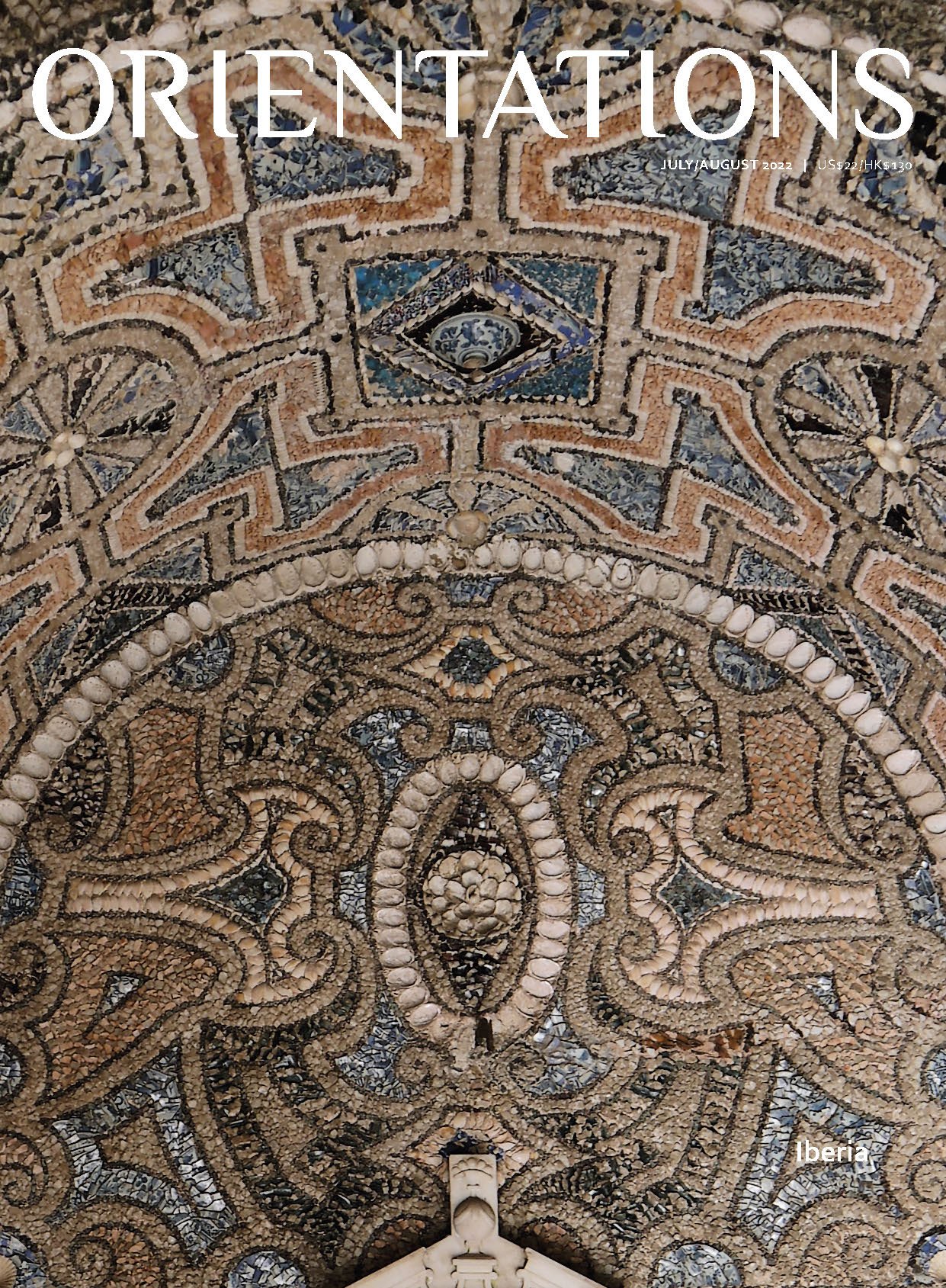JUL/AUG 2022
VOLUME 53 - NUMBER 4
We continue to dedicate one issue per year to highlight Asian art in a specific region of the world. Following last year’s issue on Eastern Europe, we turn south to focus on Iberia. Spain and Portugal’s maritime expeditions in the late 15th and 16th centuries were first through a Western route by the Spanish, which rounded the southern coast of South America and crossed the Pacific Ocean, and subsequently through an Eastern route by the Portuguese that rounded the Cape of Good Hope to India and further onwards to East and Southeast Asia. These explorations brought new cultural encounters that resulted in a confluence of ideas evident not only in artworks but also in architecture, such as the use of Chinese porcelains in embrechados.
We set the stage with discussions on Portuguese exoticism in Asia, trade routes to the East, and the construction of museum collections of Asian art and the formulation of exhibition discourses from the narratives of imperialism to the decolonization of museums in Portugal. We then focus on specific categories from Nanban wares to Chinese porcelains, textiles, and cloisonné enamels to look at their artistic value, the networks in which they circulated, and the roles they played during these centuries. This interchange between Iberia and the East continues into the modern period: a trip to Spain in 1922 undertaken by a group of painters from the Society for the Creation of National Painting (Kokuga Sōsaku Kyōkai) based in Kyoto that influenced their later work, and explorations of modernism by the Spanish-Filipino painter Fernando Zóbel, born in 1924, who was able to traverse different art worlds and later built a museum in Spain.
We were overwhelmed by the enthusiasm shown from our sponsors, which included museums, private foundations, and governmental organizations such as the Casa-Museu Medeiros e Almeida, Fundaçã Oriente, Museu Calouste Gulbenkian, Museu de São Roque, Fundação Carmona e Costa, and the Tourism Board of Madeira, with support as well from Casa São Roque, Centro Científico e Cultural de Macau, and Museu de Caramulo. This allowed us to present an expanded issue with more articles that we hope will become a definitive guide to Asian art in Iberia, sparking further interest and inspiring our readers to visit these rich collections. Lastly, I would like to extend my gratitude to Jorge Welsh and Luísa Vinhais, as this issue would not have been possible without their assistance.
FEATURES
Jorge Santos Alves. Cultural Encounters in the Early Modern World: The Case of Portuguese Exoticism in Asia
Francisco Clode. The Island of Madeira in the Routes to the East
Alexandra Curvelo. Nanban Art in Iberia
Samuel Frédéric Luterbacher. Resetting Nanban Lacquerware’s Transpacific Transits
Fernando António Baptista Pereira and José António Falcão. A Bridge between East and West: Indo-Portuguese Art
Maria João Ferreira. ‘To praise it, one need only say it was from China’: Chinese Textiles in Portugal in the Early Modern Period
Maria Antónia Pinto de Matos. From China to Portugal: Export Porcelain’s Earliest Commissions (1500–1644)
Alexandre Nobre Pais. Echoes from Distant Shores: Portuguese Ceramics from the 17th Century
Cinta Krahe. Collecting Ming Porcelain in Spain
Rocío Díaz. Chinese Armorial Porcelain for the Spanish Market
Manuel Parada López de Corselas. Chinese Christian Cloisonné in Spanish Collections
Rui Oliveira Lopes. Asian Art in Portuguese Museums and Private Collections
Jessica Hallett. ‘An Oriental Collector’: Calouste Gulbenkian’s Taste for Arts of the Islamic World and China
Cristina Castel-Branco. The Splendour of the Mughal Garden and Its Impact on Portugal’s Renaissance Gardens
Joanna Ciemińska. Chinese Porcelain ‘Embrechados’ in Portuguese Garden Architecture
Daniel Sastre de la Vega. Nihonga Painters in Spain: The Kokuga So¯saku Kyokai and its Encounter with Spanish Art
Patrick Flores. Fernando Zóbel: A Modernism of Distance
DIRECTORY
Asian Art Museums and Institutions in Iberia
REVIEWS
Aprajita Sharma. Indian Tiles: Architectural Ceramics from Sultanate and Mughal India and Pakistan by Arthur Millner

